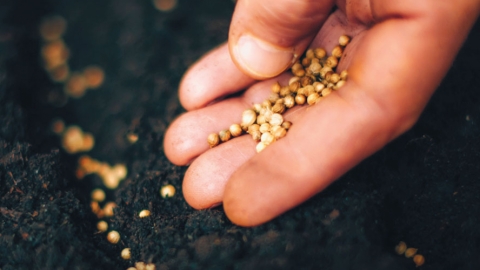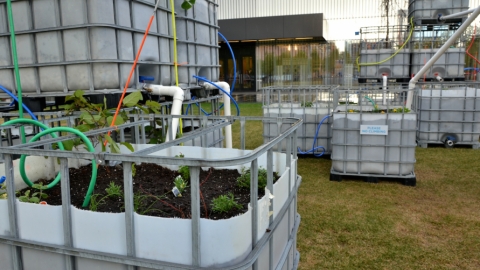The State of Alaska AG
Awareness about the importance of building local food systems has grown tremendously in Alaska, in no small part due to natural disasters including earthquakes, typhoons, and wildfires, along with the global pandemic. These events have disrupted supply chains enough to make all of us notice the ways that Alaska relies on imported food.
Every five years, the U.S. Department of Agriculture (USDA) conducts a national agricultural census. According to the most recent one, completed in 2017 (a 2022 version will be released in early 2024), 990 farms were in operation—undoubtedly, we’ve surpassed 1,000 farms now. Alaska ranks first in the nation in terms of new farms. Most of these operations are classified as small (under 10 acres). In addition, Alaska’s direct sales have continued to rise over the last decade—farmers markets, farm stands, and CSAs have been integral to this growth. Since 2006, the number of farmers markets in Alaska has more than quadrupled, from 13 to 62 in 2023, with more in the planning stages, accounting for an estimated $7 million in local food sales.
In recent years, state and federal agencies have invested in developing Alaska’s mariculture industry, with a focus on increasing production and creating new economic opportunities for coastal communities. Kelp farming has emerged as a promising industry given that kelp is a fast-growing and sustainable crop that can be harvested multiple times a year. As of 2022, 82 kelp farms were operating in Alaska, and 24 more had permits pending approval. Additionally, Alaska’s unique climate has proven ideal for peony cultivation at the time when demand is high. Rhodiola, used in herbal supplements, also has emerged as a potential major export.
The drive to address Alaska’s food security at the state level is mounting. The Governor’s Food Security and Independence Task Force released a 230+ page report this spring. It outlines recommendations for strengthening Alaska’s food system. The legislative Food Strategy Task Force is now working on how to act on these recommendations. One prime concern is access to affordable agricultural land. In 2022, the state Department of Natural Resources put several designated agricultural parcels out for bid, accounting for 2,000 acres in the first phase of a long-planned Nenana-Totchaket Agricultural Project, with more land sales planned in the coming years. This land sale was not without controversy, with concerns about the suitability of the land for agriculture, the lack of requirements for actual agricultural activities, and questions about lack of Tribal consultations.
This spring, the Alaska Local Food Purchase Program was launched by the Division of Agriculture, with USDA funding for the purchase of locally grown and produced foods from farmers. Funds are supporting the growth of regional farming through pilot programs with Kodiak-based Qik’rtaq Food Hub—which includes six geographically isolated Alaska Native villages and Stevens Village tribal buffalo ranch—to provide food to local communities. This program also supports local food purchases from Alaska’s farmers markets and food hubs for food access organizations.
Workforce development is key. The average age of a producer in Alaska is 55.2 years old and almost half of the state’s farmers have ten or less years of experience. The Alaska Farmers Market Association has formed a chapter of the National Young Farmers Coalition to support the current and potential Alaskan farming workforce. Programs like the Beginning Farmer Training for Rural Communities, led by Indigenous farmers in partnership with the Calypso Farm & Ecology Center, teach participants how to grow vegetables in a way that’s transferable to village communities. Another emerging avenue of support for agricultural and food system growth is the upcoming Islands and Remote Area USDA Regional Food Business Center, led by the Alaska Food Policy Council. The center is slated to provide technical assistance, coordination, and capacity building throughout the state.
All this potential requires your attention and support. Help grow Alaska’s agricultural sector:
• Shop for local food at farmers markets, CSAs, and farm stands.
• Demand Alaska Grown and local from your grocery stores.
• Advocate! Get involved with food organizations at the local, state, and federal levels for food systems funding and policies.
.Editors’ note: if you don’t already receive the Alaska Food Policy Council monthly newsletter, subscribe to get and stay in the loop.











